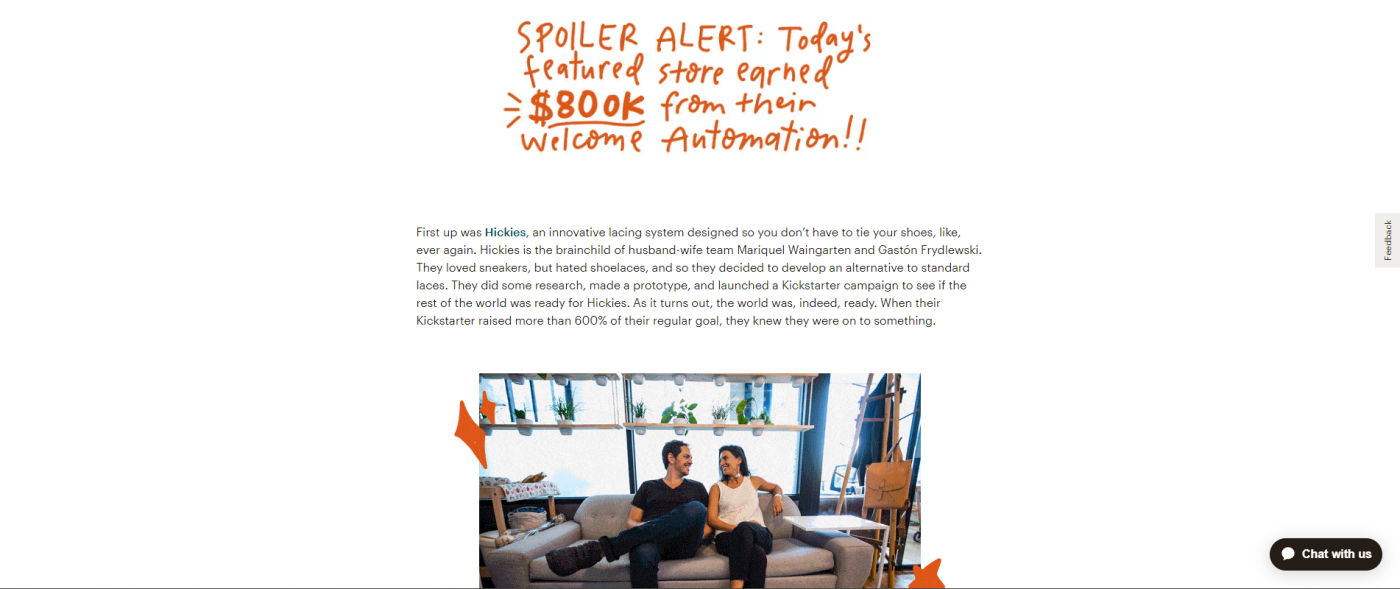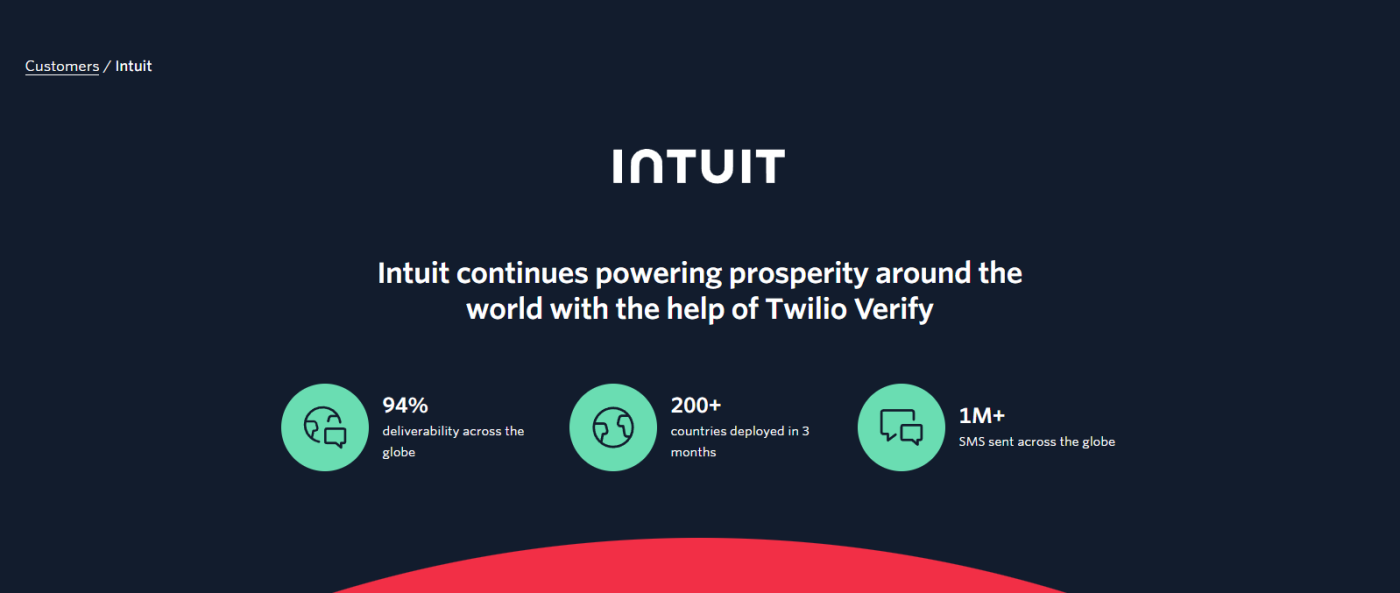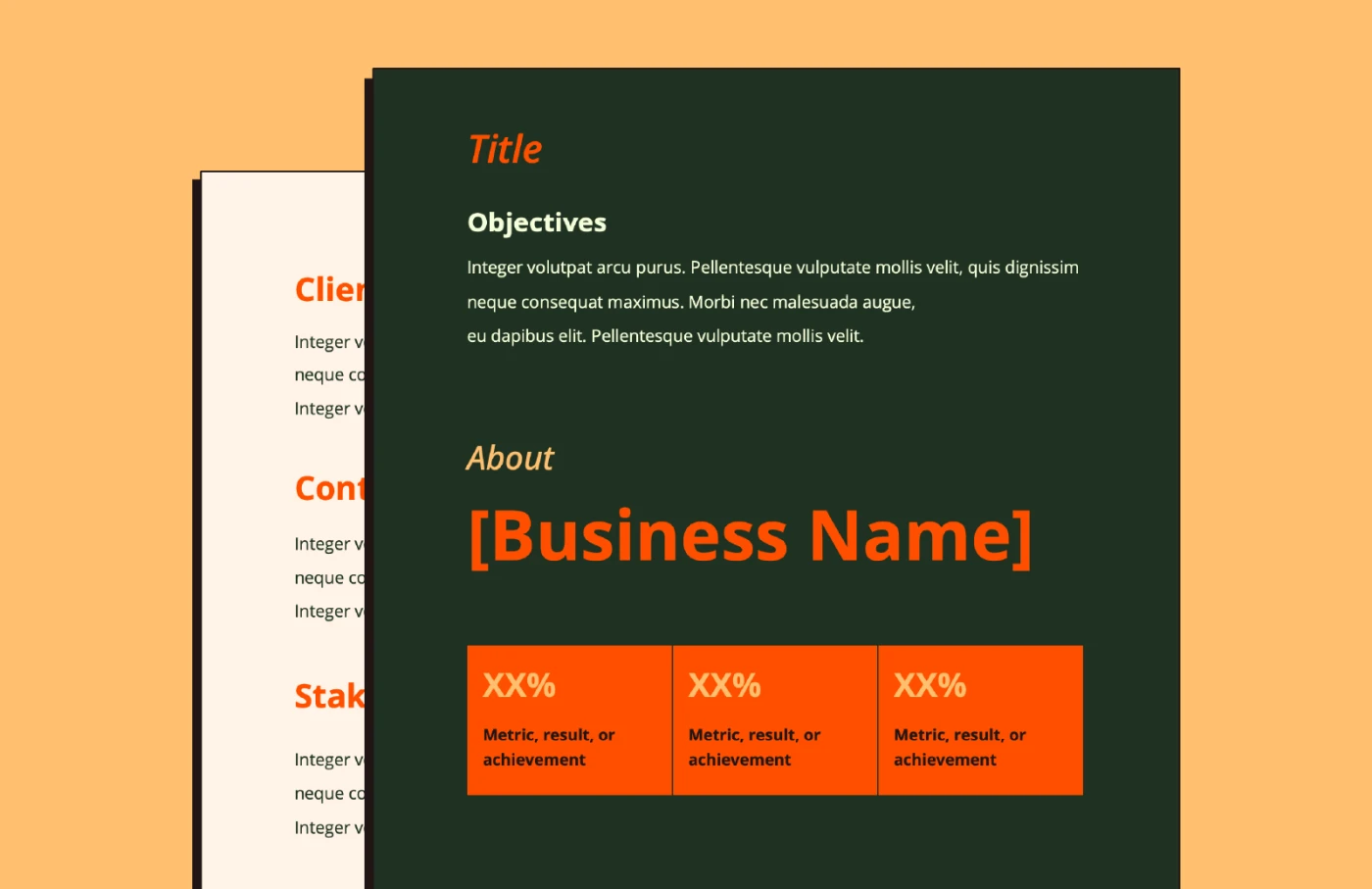

I like to think of case studies as a business's version of a resume. It highlights what the business can do, lends credibility to its offer, and contains only the positive bullet points that paint it in the best light possible.
Imagine if the guy running your favorite taco truck followed you home so that he could "really dig into how that burrito changed your life." I see the value in the practice. People naturally prefer a tried-and-true burrito just as they prefer tried-and-true products or services.
To help you showcase your success and flesh out your burrito questionnaire, I've put together some case study examples and key takeaways.
A case study is an in-depth analysis of how your business, product, or service has helped past clients. It can be a document, a webpage, or a slide deck that showcases measurable, real-life results.
Grow your business with marketing automationFor example, if you're a SaaS company, you can analyze your customers' results after a few months of using your product to measure its effectiveness. You can then turn this analysis into a case study that further proves to potential customers what your product can do and how it can help them overcome their challenges.
It changes the narrative from "I promise that we can do X and Y for you" to "Here's what we've done for businesses like yours, and we can do it for you, too."
While most case studies follow the same structure, quite a few try to break the mold and create something unique. Some businesses lean heavily on design and presentation, while others pursue a detailed, stat-oriented approach. Some businesses try to mix both.
There's no set formula to follow, but I've found that the best case studies utilize impactful design to engage readers and leverage statistics and case details to drive the point home. A case study typically highlights the companies, the challenges, the solution, and the results. The examples below will help inspire you to do it, too.

People love a good farm-to-table coffee story, and boy am I one of them. But I've shared this case study with you for more reasons than my love of coffee. I enjoyed this study because it was written as though it was a letter.
In this case study, the founder of Volcanica Coffee talks about the journey from founding the company to personally struggling with learning and applying digital marketing to finding and enlisting AdRoll's services.
It felt more authentic, less about AdRoll showcasing their worth and more like a testimonial from a grateful and appreciative client. After the story, the case study wraps up with successes, milestones, and achievements. Note that quite a few percentages are prominently displayed at the top, providing supporting evidence that backs up an inspiring story.
Takeaway: Highlight your goals and measurable results to draw the reader in and provide concise, easily digestible information.

This Airtable case study on Taylor Guitars comes as close as one can to an optimal structure. It features a video that represents the artistic nature of the client, highlighting key achievements and dissecting each element of Airtable's influence.
It also supplements each section with a testimonial or quote from the client, using their insights as a catalyst for the case study's narrative. For example, the case study quotes the social media manager and project manager's insights regarding team-wide communication and access before explaining in greater detail.
Takeaway: Highlight pain points your business solves for its client, and explore that influence in greater detail.

My favorite part of Figma's case study is highlighting why EndeavourX chose its solution. You'll notice an entire section on what Figma does for teams and then specifically for EndeavourX.
It also places a heavy emphasis on numbers and stats. The study, as brief as it is, still manages to pack in a lot of compelling statistics about what's possible with Figma.
Takeaway: Showcase the "how" and "why" of your product's differentiators and how they benefit your customers.

Zapier's case study leans heavily on design, using graphics to present statistics and goals in a manner that not only remains consistent with the branding but also actively pushes it forward, drawing users' eyes to the information most important to them.
The graphics, emphasis on branding elements, and cause/effect style tell the story without requiring long, drawn-out copy that risks boring readers. Instead, the cause and effect are concisely portrayed alongside the client company's information for a brief and easily scannable case study.
Takeaway: Lean on design to call attention to the most important elements of your case study, and make sure it stays consistent with your branding.

In true OpenAI fashion, this case study is a block of text. There's a distinct lack of imagery, but the study features a narrated video walking readers through the product.
The lack of imagery and color may not be the most inviting, but utilizing video format is commendable. It helps thoroughly communicate how OpenAI supported Ironclad in a way that allows the user to sit back, relax, listen, and be impressed.
Takeaway: Get creative with the media you implement in your case study. Videos can be a very powerful addition when a case study requires more detailed storytelling.

GitHub's case study on Shopify is a light read. It addresses client pain points and discusses the different aspects its product considers and improves for clients. It touches on workflow issues, internal systems, automation, and security. It does a great job of representing what one company can do with GitHub.
To drive the point home, the case study features colorful quote callouts from the Shopify team, sharing their insights and perspectives on the partnership, the key issues, and how they were addressed.
Takeaway: Leverage quotes to boost the authoritativeness and trustworthiness of your case study.

Contentful's case study on Audible features almost every element a case study should. It includes not one but two videos and clearly outlines the challenge, solution, and outcome before diving deeper into what Contentful did for Audible. The language is simple, and the writing is heavy with quotes and personal insights.
This case study is a uniquely original experience. The fact that the companies in question are perhaps two of the most creative brands out there may be the reason. I expected nothing short of a detailed analysis, a compelling story, and video content.
Takeaway: Inject some brand voice into the case study, and create assets that tell the story for you.

Asana's case study on Zoom is longer than the average piece and features detailed data on Zoom's growth since 2020. Instead of relying on imagery and graphics, it features several quotes and testimonials.
It's designed to be direct, informative, and promotional. At some point, the case study reads more like a feature list. There were a few sections that felt a tad too promotional for my liking, but to each their own burrito.
Takeaway: Maintain a balance between promotional and informative. You want to showcase the high-level goals your product helped achieve without losing the reader.

I've always been a fan of Mailchimp's comic-like branding, and this case study does an excellent job of sticking to their tradition of making information easy to understand, casual, and inviting.
It features a short video that briefly covers Hickies as a company and Mailchimp's efforts to serve its needs for customer relationships and education processes. Overall, this case study is a concise overview of the partnership that manages to convey success data and tell a story at the same time. What sets it apart is that it does so in a uniquely colorful and brand-consistent manner.
Takeaway: Be concise to provide as much value in as little text as possible.

The gaming industry is notoriously difficult to recruit for, as it requires a very specific set of skills and experience. This case study focuses on how Workday was able to help fill that recruitment gap for NVIDIA, one of the biggest names in the gaming world.
Though it doesn't feature videos or graphics, this case study stood out to me in how it structures information like "key products used" to give readers insight into which tools helped achieve these results.
Takeaway: If your company offers multiple products or services, outline exactly which ones were involved in your case study, so readers can assess each tool.
 Screenshot of KFC and Contentful's case study showing the outcome of the study, showing two stats: 43% increase in YoY digital sales and 50%+ increase in AU digital sales YoY" />
Screenshot of KFC and Contentful's case study showing the outcome of the study, showing two stats: 43% increase in YoY digital sales and 50%+ increase in AU digital sales YoY" />
I'm personally not a big KFC fan, but that's only because I refuse to eat out of a bucket. My aversion to the bucket format aside, Contentful follows its consistent case study format in this one, outlining challenges, solutions, and outcomes before diving into the nitty-gritty details of the project.
Say what you will about KFC, but their primary product (chicken) does present a unique opportunity for wordplay like "Continuing to march to the beat of a digital-first drum(stick)" or "Delivering deep-fried goodness to every channel."
Takeaway: Inject humor into your case study if there's room for it and if it fits your brand.

Twilio does an excellent job of delivering achievements at the very beginning of the case study and going into detail in this two-minute read. While there aren't many graphics, the way quotes from the Intuit team are implemented adds a certain flair to the study and breaks up the sections nicely.
It's simple, concise, and manages to fit a lot of information in easily digestible sections.
Takeaway: Make sure each section is long enough to inform but brief enough to avoid boring readers. Break down information for each section, and don't go into so much detail that you lose the reader halfway through.

Salesforce created a video that accurately summarizes the key points of the case study. Beyond that, the page itself is very light on content, and sections are as short as one paragraph.
I especially like how information is broken down into "What you need to know," "Why it matters," and "What the difference looks like." I'm not ashamed of being spoon-fed information. When it's structured so well and so simply, it makes for an entertaining read.
Takeaway: Invest in videos that capture and promote your partnership with your case study subject. Video content plays a promotional role that extends beyond the case study in social media and marketing initiatives.

Benchling is an impressive entity in its own right. Biotech R&D and health care nuances go right over my head. But the research and digging I've been doing in the name of these burritos (case studies) revealed that these products are immensely complex.
And that's precisely why this case study deserves a read—it succeeds at explaining a complex project that readers outside the industry wouldn't know much about.
Takeaway: Simplify complex information, and walk readers through the company's operations and how your business helped streamline them.

The concision of this case study is refreshing. It features two sections—the challenge and the solution—all in 316 words. This goes to show that your case study doesn't necessarily need to be a four-figure investment with video shoots and studio time.
Sometimes, the message is simple and short enough to convey in a handful of paragraphs.
Takeaway: Consider what you should include instead of what you can include. Assess the time, resources, and effort you're able and willing to invest in a case study, and choose which elements you want to include from there.

I may be biased, but I'm a big fan of seeing metrics and achievements represented in branded graphics. It can be a jarring experience to navigate a website, then visit a case study page and feel as though you've gone to a completely different website.
The Zapier format provides nuggets of high-level insights, milestones, and achievements, as well as the challenge, solution, and results. My favorite part of this case study is how it's supplemented with a blog post detailing how Hudl uses Zapier automation to build a seamless user experience.
The case study is essentially the summary, and the blog article is the detailed analysis that provides context beyond X achievement or Y goal.
Takeaway: Keep your case study concise and informative. Create other resources to provide context under your blog, media or press, and product pages.
Now that you've had your fill of case studies (if that's possible), I've got just what you need: an infinite number of case studies, which you can create yourself with these case study templates.
 place to write the main success of the case study on a dark green background" />
place to write the main success of the case study on a dark green background" />
If you've got a quick hit of stats you want to show off, try this template. The opening section gives space for a short summary and three visually appealing stats you can highlight, followed by a headline and body where you can break the case study down more thoroughly. This one's pretty simple, with only sections for solutions and results, but you can easily continue the formatting to add more sections as needed.
 place to write the main success of the case study " />
place to write the main success of the case study " />
For a case study template with a little more detail, use this one. Opening with a striking cover page for a quick overview, this one goes on to include context, stakeholders, challenges, multiple quote callouts, and quick-hit stats.

Whether you want a little structural variation or just like a nice dark green, this template has similar components to the last template but is designed to help tell a story. Move from the client overview through a description of your company before getting to the details of how you fixed said company's problems.
Examples are all well and good, but you don't learn how to make a burrito just by watching tutorials on YouTube without knowing what any of the ingredients are. You could, but it probably wouldn't be all that good.
Writing a good case study comes down to a mix of creativity, branding, and the capacity to invest in the project. With those details in mind, here are some case study tips to follow:
A case study example is a source of inspiration you can leverage to determine how to best position your brand's work. Find your unique angle, and refine it over time to help your business stand out. Ask anyone: the best burrito in town doesn't just appear at the number one spot. They find their angle (usually the house sauce) and leverage it to stand out.
In fact, with the right technology, it can be refined to work better. Explore how Zapier's automation features can help drive results for your case study by making your case study a part of a developed workflow that creates a user journey through your website, your case studies, and into the pipeline.
Got your case study template? Great—it's time to gather the team for an awkward semi-vague data collection task. While you do that, here are some case study quick answers for you to skim through while you contemplate what to call your team meeting.
An example of a case study is when a software company analyzes its results from a client project and creates a webpage, presentation, or document that focuses on high-level results, challenges, and solutions in an attempt to showcase effectiveness and promote the software.
To write a good case study, you should have an objective, identify persuasive and compelling data, leverage graphics, and simplify data. Case studies typically include an analysis of the challenge, solution, and results of the partnership.
While case studies don't have a set format, they're often portrayed as reports or essays that inform readers about the partnership and its results.
Related reading:
Get productivity tips delivered straight to your inbox
We’ll email you 1-3 times per week—and never share your information.

Hachem is a writer and digital marketer from Montreal. After graduating with a degree in English, Hachem spent seven years traveling around the world before moving to Canada. When he's not writing, he enjoys Basketball, Dungeons and Dragons, and playing music for friends and family.